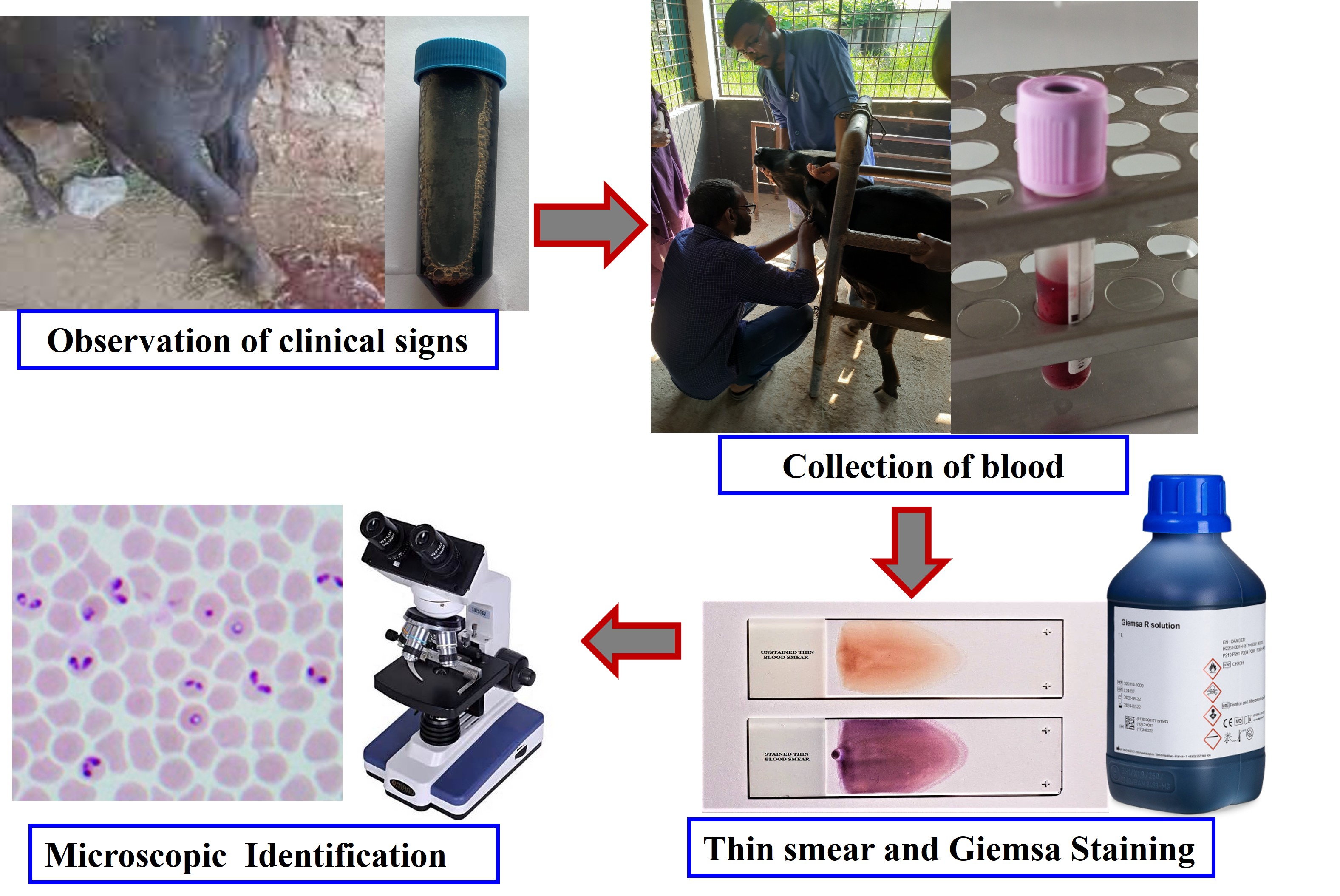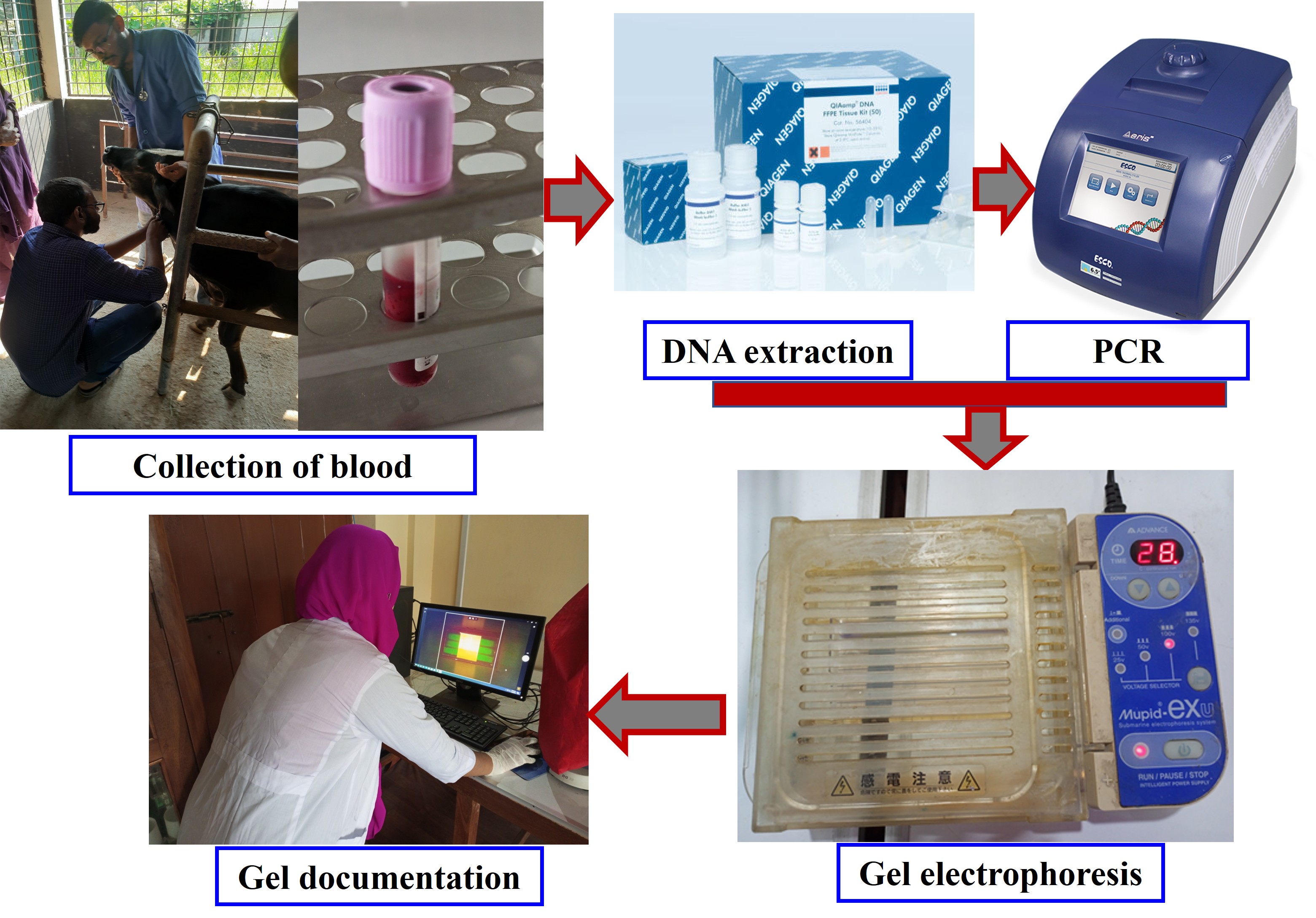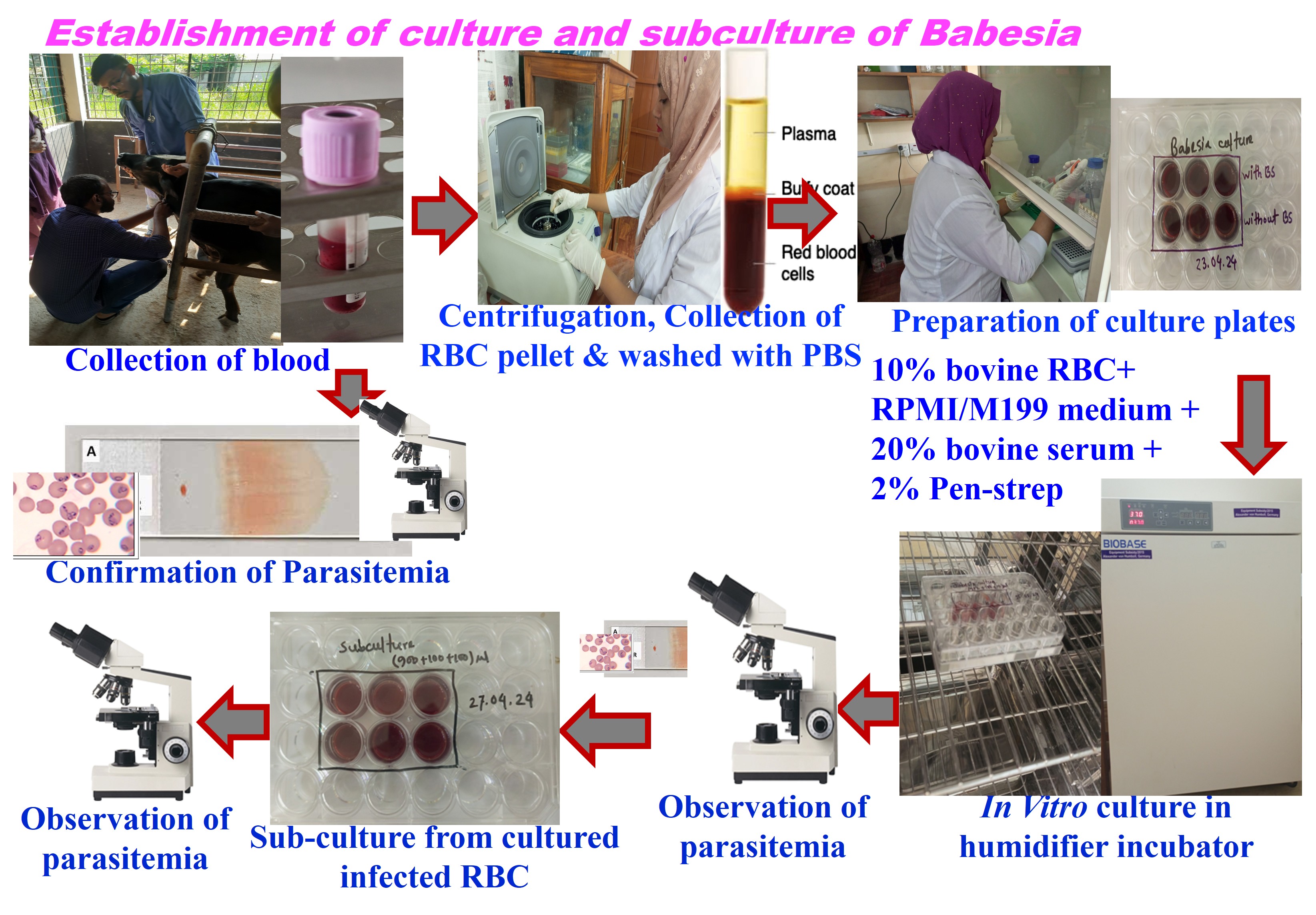Isolation, molecular characterization and vaccine development against Bovine Babesia in Bangladesh
Mymensingh
Babesia is tick borne haemoprotozoa and babesiosis are serious threat to indigenous cattle and dairy farming in Bangladesh. Economic losses due to this disease are directly related to morbidity, mortality, production losses together with the cost of veterinary diagnosis, treatment, and tick control. Prophylactic immunization has proved an effective method to prevent the disease, but the vaccines developed worldwide are expensive, not available and yet to prove as effective.
Blood samples were collected from suspected cattle for molecular and microscopic identification of Babesia species. Sequencing of selected gene was done commercially and phylogenetic analysis was done. Babesia was isolated from infected blood for cultured in vitro in M199 media or RPMI media. This cultured organism will be killed by sonication and vaccine will be prepared with adjuvant. Detection of antigen by ELISA, immunization of laboratory animal models (mice), detection of antibody titers and challenge infection will be done to evaluate the efficacy of the vaccine.
About 100% of the cattle was infected with blood protozoa while all of them were infected with Babesia in the study areas. In most of the cases, Babesia was found with other co-infections with Theileria and/or Anaplasma in cattle in Bangladesh. The majority (76.0%) was co-infections, whereas double infections were observed in 24.0% of the cattle. Age, sex and breed of the cattle had significant effect on Babesia infection in cattle in Bangladesh. Adult, females and cross cattle had the more infections than the others. Babesia bigemina, B. bovis and B. naoakii were identified in cattle in Bangladesh. None of the samples in this study were amplified with B. divergens primer. Sequencing has done commercially and phylogenetic tree was constructed. In vitro culture protocol of Babesia has been optimized to culture Babesia in bulk. Babesia infected RBC has been preserved in cryovials in -80C for further subculture.
In vitro culture protocol of Babesia has been optimized to culture Babesia in bulk. Next attempt will be preparation of killed vaccine, detection of antigen and immunization of mice, detection of antibody titers and challenge infection. After successful completion of the project effective vaccines against this devastating parasite expected to be invented.
The losses due to babesiosis (loss of milk and meat production, loss for death of the infected animal, treatment cost, cost of vector control and disease control) in cattle with be reduced and farmers will get economic benefit by cattle farming.
After successful development of killed vaccine against Babesia from local isolates, continuous production of the vaccine will be possible by in vitro culture of the organism in laboratory as in vitro culture protocol has already been established in this project.



